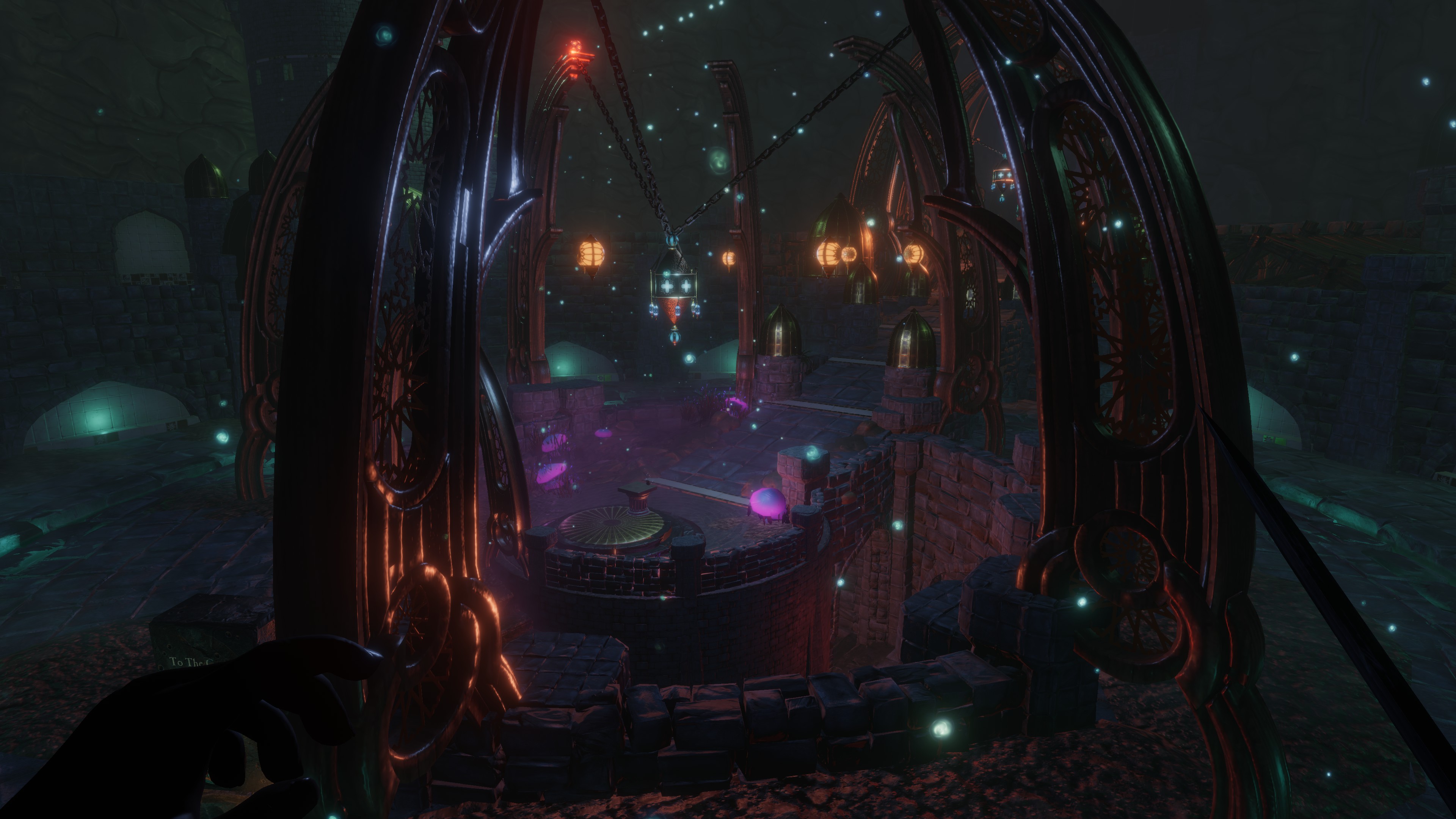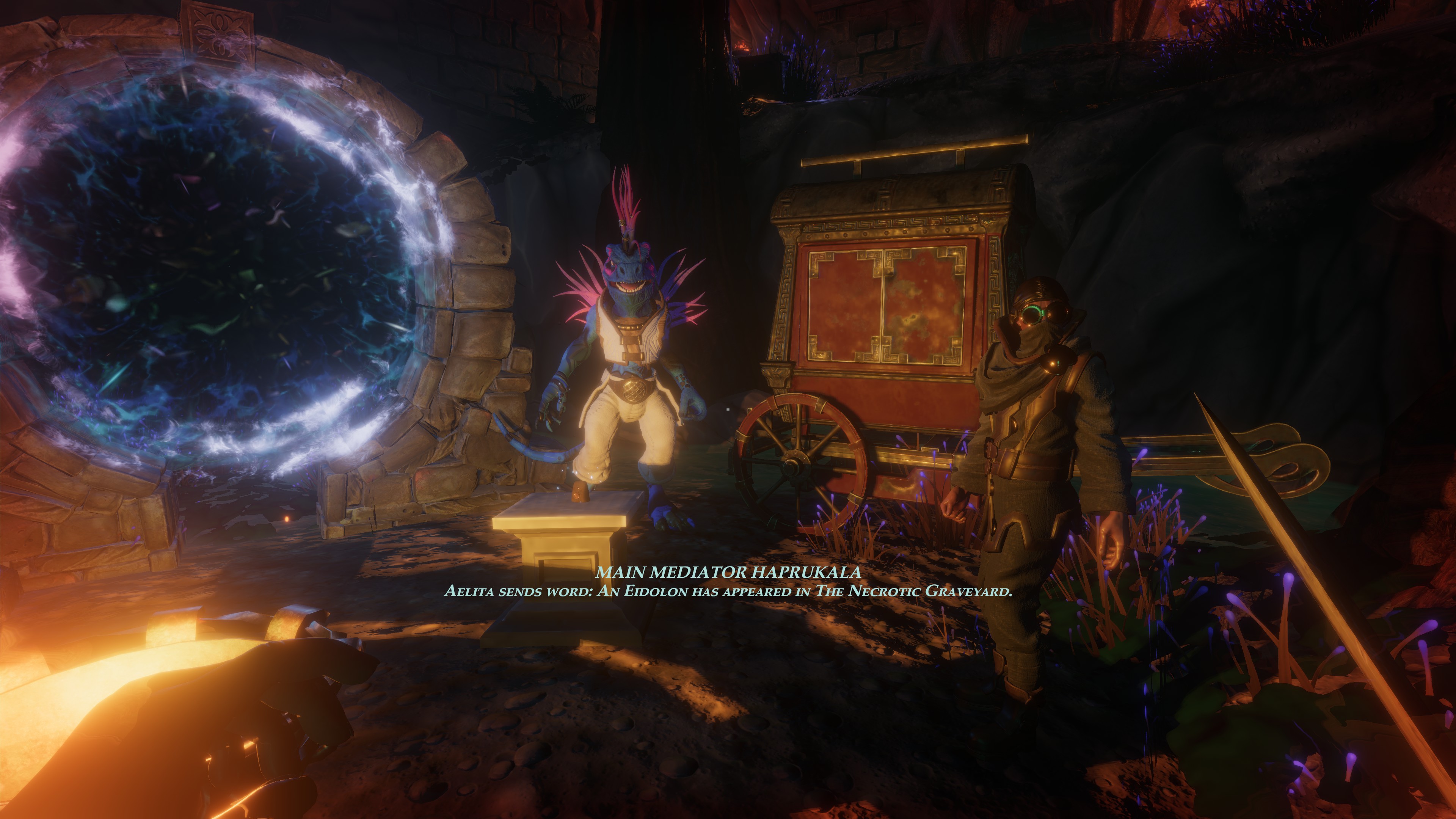
Underworld Ascendant was a dream game for me, a fully-fledged sequel to the original immersive sim, created by a developer forged from the remnants of Looking Glass—creators of Thief and System Shock. It had the talent. It had the experience. What could go wrong?
The answer, it turned out, was "pretty much everything". Ascendant was terrible, a barely playable fudge of confused mechanics, sluggish movement and interactions, repetitive missions, and a shocking number of bugs. It was also evidently unfinished, with barren, empty environments, a disconnected world-space, and key features of the original Ultima Underworld’s design missing, like dialogue trees and rival factions you could interact with.
Apologising for the state of the game at release, OtherSide committed to improving the experience post-launch. Since then, the developer has made four major updates and myriad lesser patches, fixing bugs, adjusting core mechanics, and making some more fundamental changes to how the game functions.

The most significant is to how the world is structured. Previously, the various levels of the Stygian Abyss were entirely separate, accessed via a portal that would take you to the relevant level for your mission. As of the second update, however, all the game’s levels are connected to one another. They’re still separated by loading screens, but now you can progress from one level to the next, exploring as you like rather than being only able to explore the level for the mission you’re on.
This change comes coupled with an overhaul for how questing works. Originally, Ascendant’s quests were picked up from the Midnight Forum, a tavern-like area in the game’s hub of Marcaul. These quests were assigned by different factions, and would provide influence with each of them, required to complete the game’s final mission.
Now, the game places much greater focus on the main story, unlocking new areas of the Abyss as you track down the Abyssal Keys. Quests are also provided differently, with a Saurian named ‘Hapurkala’ setting up a camp in the relevant area, meaning you can return for a new quest without venturing back to Marcaul. Both the main story and faction missions have also been updated, refining existing quests and introducing new ones. An early example sees you rescuing an Outcast named Fane from a dungeon, who then sets up as a vendor for stealth gear in Hapurkala’s camp.
Alongside these major changes are numerous smaller additions. These include new enemies like the fearsome Shadow Beast, new Runes and Rune formulas for a greater range of spells, and new game mechanics such as Saurian prisoners who can be released to fight alongside you. OtherSide has also spent time squashing bugs and making improvements. Setting things on fire no longer murders your framerate, while some of the game’s more egregious glitches are fixed.
The biggest gaming news, reviews and hardware deals
Keep up to date with the most important stories and the best deals, as picked by the PC Gamer team.

These are all good, necessary improvements. Sadly, none of them change the fact that Underworld Ascendant still isn’t much fun to play. Movement is still awkward, combat is clumsy, and stealth is unsatisfying. The physics engine remains dreadful, and trying to climb up the game’s ropes and chains is still like trying to hold onto a snake on amphetamines.
I also hate how so many of the game’s mechanics are deliberately obscured. The Magic system is interesting, but its emphasis on experimentation should focus on using spells, rather than finding out what they are. Meanwhile, the Feats system, which unlocks skill points for performing specific in-game actions, essentially means gaining experience comes down to random chance.
I’m glad OtherSide has strived to improve Underworld Ascendant, and I’m comfortable saying that it’s no longer a broken game. Instead, it’s merely a bad one, and there is still a long road ahead before it resembles anything close to the halcyon days of Looking Glass.
Rick has been fascinated by PC gaming since he was seven years old, when he used to sneak into his dad's home office for covert sessions of Doom. He grew up on a diet of similarly unsuitable games, with favourites including Quake, Thief, Half-Life and Deus Ex. Between 2013 and 2022, Rick was games editor of Custom PC magazine and associated website bit-tech.net. But he's always kept one foot in freelance games journalism, writing for publications like Edge, Eurogamer, the Guardian and, naturally, PC Gamer. While he'll play anything that can be controlled with a keyboard and mouse, he has a particular passion for first-person shooters and immersive sims.

